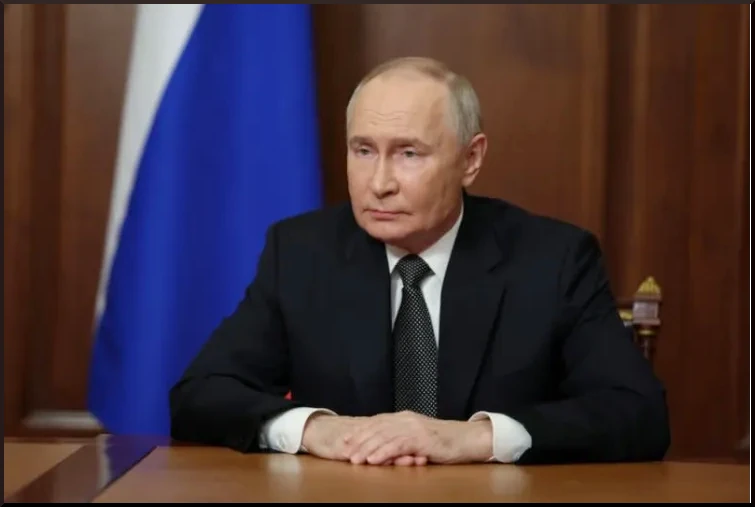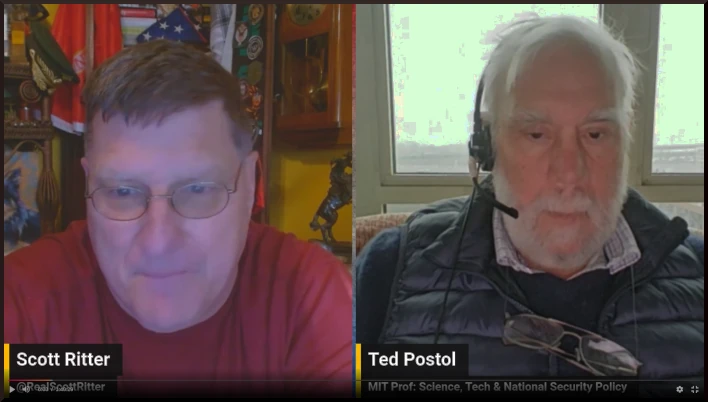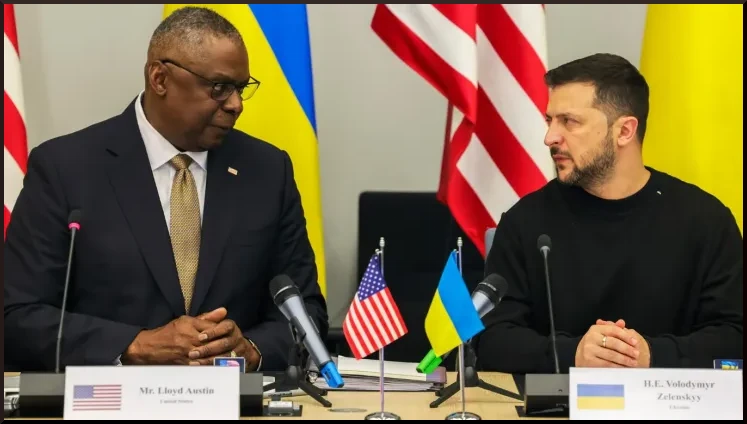by Scott Ritter, published on Scott Ritter Extra, November 23, 2024
There’s an old saying, “Fool around and find out.” On November 19, Ukraine fired six US-made missiles at a target located on Russian soil. On November 20, Ukraine fired up to a dozen British-made Storm Shadow cruise missiles against a target on Russian soil. On November 21, Russia fired a new intermediate-range missile against a target of Ukrainian soil.
Ukraine and its American and British allies fooled around.
And now they have found out: if you attack Mother Russia, you will pay a heavy price.
In the early morning hours of November 21, Russia launched a missile which struck the Yuzmash factory in the Ukrainian city of Dnipropetrovsk. Hours after this missile, which was fired from the Russian missile test range in Kapustin Yar, struck its target, Russian President Vladimir Putin appeared on Russian television, where he announced that the missile fired by Russia, which both the media and western intelligence had classified as an experimental modification of the RS-26 missile, which had been mothballed by Russia in 2017, was, in fact, a completely new weapon known as the “Oreshnik,” which in Russian means “hazelnut.” Putin noted that the missile was still in its testing phase, and that the combat launch against Ukraine was part of the test, which was, in his words, “successful.”

Putin declared that the missile, which flew to its target at more than ten times the speed of sound, was invincible. “Modern air defense systems that exist in the world, and anti-missile defenses created by the Americans in Europe, can’t intercept such missiles,” Putin said.
Putin said the Oreshnik was developed in response to the planned deployment by the United States of the Dark Eagle hypersonic missile, itself an intermediate-range missile. The Oreshnik was designed to “mirror” US and NATO capabilities.
The next day, November 22, Putin met with the Commander-in-Chief of the Strategic Missile Forces, Sergey Karakayev, where it was announced that the Oreshnik missile would immediately enter serial production. According to General Karakayev, the Oreshnik, when deployed, could strike any target in Europe without fear of being intercepted. According to Karakayev, the Oreshnik missile system expanded the combat capabilities of the Russian Strategic Missile Forces to destroy various types of targets in accordance with their assigned tasks, both in non-nuclear and nuclear warheads. The high operational readiness of the system, Karakayev said, allows for retargeting and destroying any designated target in the shortest possible time.

“Missiles will speak for themselves”
The circumstances which led Russia to fire, what can only be described as a strategic weapons system against Ukraine, unfolded over the course of the past three months. On September 6, US Secretary of Defense Lloyd Austin traveled to Ramstein, Germany, where he met with Ukrainian President Volodymyr Zelensky, who pressed upon Lloyd the importance of the US granting Ukraine permission to use the US-made Army Tactical Missile System (ATACMS) missile on targets located inside the pre-2014 borders of Russia (these weapons had been previously used by Ukraine against territory claimed by Russia, but which is considered under dispute—Crimea, Kherson, Zaporizhia, Donetsk, and Lugansk). Zelensky also made the case for US concurrence regarding similar permissions to be granted regarding the British-made Storm Shadow cruise missile.

Ukraine was in possession of these weapons and had made use of them against the Russian territories in dispute. Other than garnering a few headlines, these weapons had virtually zero discernable impact on the battlefield, where Russian forces were prevailing in battle against stubborn Ukrainian defenders.
Secretary Austin listened while Zelensky made his case for the greenlight to use ATACMS and Storm Shadow against Russian targets. “We need to have this long-range capability, not only on the divided territory of Ukraine but also on Russian territory so that Russia is motivated to seek peace,” Zelensky argued, adding that, “We need to make Russian cities and even Russian soldiers think about what they need: peace or Putin.”
Austin rejected the Ukrainian President’s request, noting that no single military weapon would be decisive in the ongoing fighting between Ukraine and Russia, emphasizing that the use of US and British weapons to attack targets inside Russia would only increase the chances for escalating the conflict, bringing a nuclear-armed Russia into direct combat against NATO forces.
On September 11, US Secretary of State Antony Blinken, accompanied by British Foreign Secretary David Lammy, traveled to the Ukrainian capital of Kiev, where Zelensky once again pressured both men regarding permission to use ATACMS and Storm Shadow on targets inside Russia. Both men demurred, leaving the matter for a meeting scheduled between US President Joe Biden and British Prime Minister Kier Starmer, on Friday, September 13. (These missiles require Western/US crews to fire them, so permission is more than a greenlight. ~jb)
The next day, September 12, Russian President Vladimir Putin spoke to the press in Saint Petersburg, Russia, where he addressed the question of the potential use by Ukraine of US- and British-made weapons. “This will mean that NATO countries – the United States and European countries – are at war with Russia,” Putin said. “And if this is the case, then, bearing in mind the change in the essence of the conflict, we will make appropriate decisions in response to the threats that will be posed to us.”
President Biden took heed of the Russian President’s words, and despite being pressured by Prime Minister Starmer to greenlight the use of ATACMS and Storm Shadow by Ukraine, opted to continue the US policy of prohibiting such actions.
And there things stood, until November 18, when President Biden, responding to reports that North Korea had dispatched thousands of troops to Russia to join in the fighting against Ukrainian forces, reversed course, allowing US-provided intelligence to be converted into data used to guide both the ATACMS and Storm Shadow missiles to their targets. These targets had been provided by Zelensky to the US back in September, when the Ukrainian President visited Biden at the White House. Zelensky had made striking these targets with ATACMS and Storm Shadow missiles a key part of his so-called “victory plan.”
After the approval had been given by the US, Zelensky spoke to the press. “Today, there is a lot of talk in the media about us receiving a permit for respective actions,” he said. “Hits are not made with words. Such things don’t need announcements. Missiles will speak for themselves.”
The next day, November 19, Ukraine fired six ATACMS against targets near the Russian city of Bryansk. The day after—November 20—Ukraine fired Storm Shadow missiles against a Russian command post in the Kursk province of Russia.
The Ukrainian missiles had spoken.
The Russian response
Shortly after the Storm Shadow attacks on Kursk occurred, Ukrainian social media accounts began reporting that Ukrainian intelligence had determined that the Russians were preparing an RS-26 Rubezh missile for launch against Ukraine. These reports suggested that the intelligence came from US-provided warnings, including imagery, as well as intercepted radio communications from the Kapustin Yar missile test facility, located east of the Russian city of Astrakhan.
*Featured image: Illustration by NEMØ.
Scott Ritter is a retired Colonel from the Marines and a former weapons inspector for the US and the United Nations.
